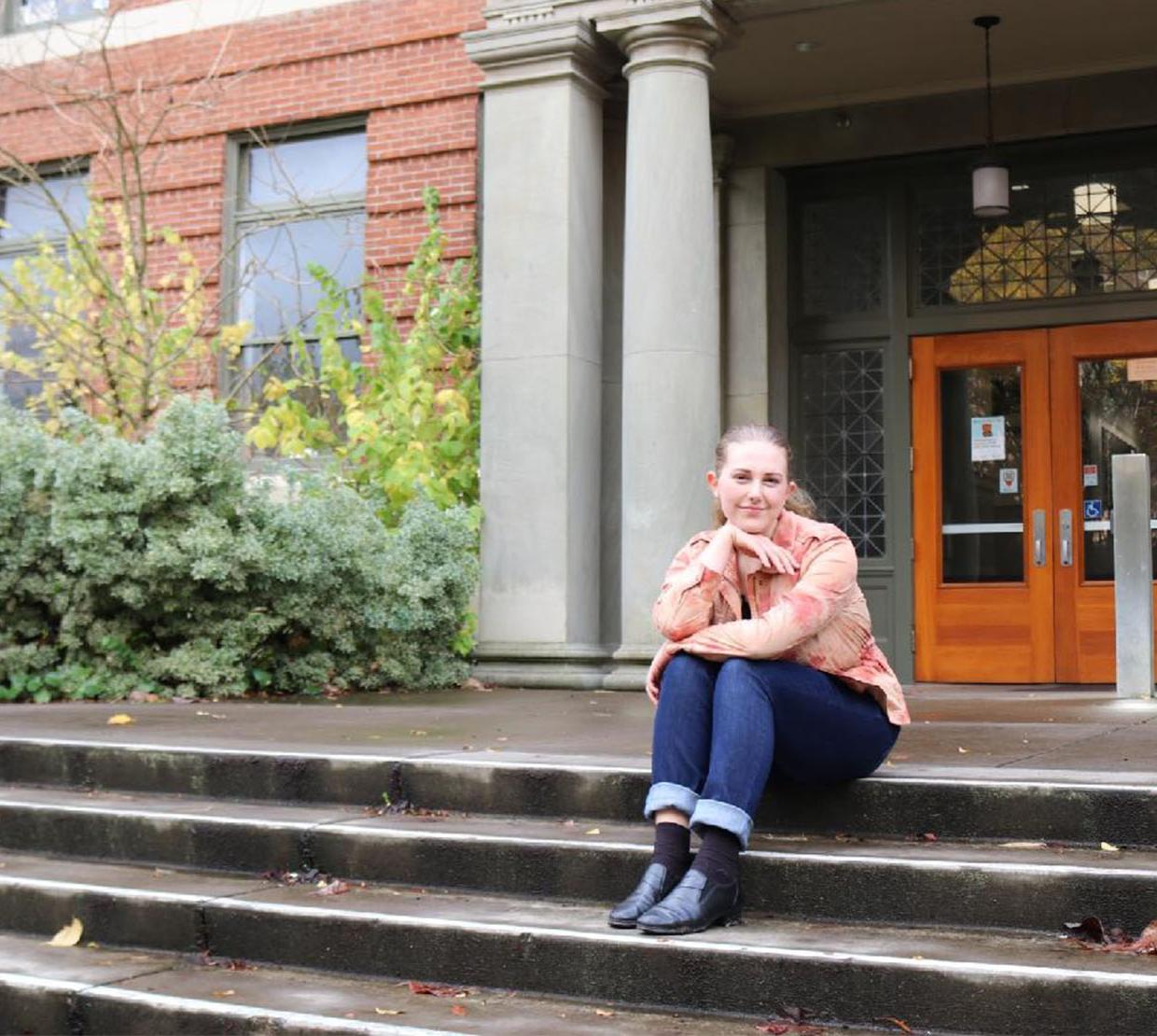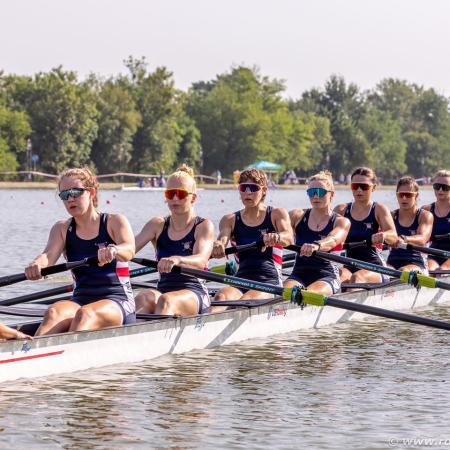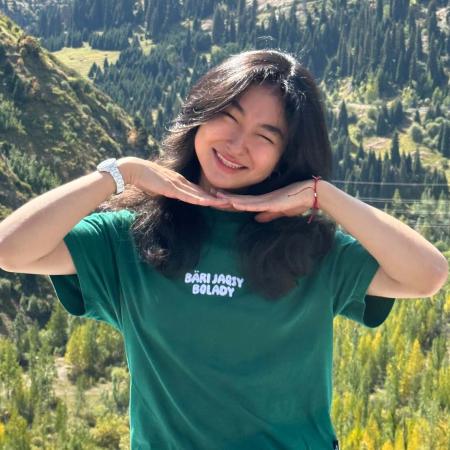Thanks to two different programs that provided research funding, Alice Lulich (Honors Chemistry ’22) will graduate this spring a published researcher with three years of experience to her name. “Oregon State’s emphasis on research, and especially undergraduate research, really drew me in,” she said.
Lulich grew up in Bend and Medford, Oregon. “I was always a bright kid,” Lulich said. “But, initially, I was more inclined towards the arts — dance, theatre.” In high school, an excellent AP chemistry instructor inspired Lulich to apply her creativity to scientific questions instead. “She was pretty strict, but she loved the subject, and that gave me a great foundation,” Lulich said.
Lulich found chemistry a rewarding way to train her innate curiosity. “I’ve always had these questions,” she said. “Biology gave me some of the answers, physics gave me some of the answers, but chemistry just really made sense and felt satisfying to me.”
At Oregon State, Lulich has continued her enthusiasm for chemistry, plugging into undergraduate research in the fall of her first year through the Undergraduate Research, Scholarship and the Arts (URSA) Engage program. This program allows first- and second-year and transfer students from any college to receive funding for research and present their work.
Lulich took a risk and joined the lab of May Nyman, professor of chemistry, even though the field of study was new to her. “I really didn’t know anything,” Lulich said. “I thought, ‘Aqueous inorganic chemistry? I’m not totally sure what that is. I think I’ll try it’!”
Lulich’s willingness to explore and challenge herself paid off. “Alice has always been a spark of energy and drive from day one at OSU,” said Nyman. With Nyman as her mentor, Lulich completed two terms of research in her first year of college.
After her second year, Lulich continued her work with May Nyman thanks to the Summer Undergraduate Research Experience (SURE) Science program. Exclusive to the College of Science, SURE Science allows students of any year to get paid to do full-time research over the summer with faculty from any college. During the program, Lulich “made one of the greatest discoveries in my lab through her synthesis experiments,” said Nyman.
International research partnerships
Lulich’s research involves metal organic frameworks (MOFs), highly versatile compounds composed of a metal cation in the center and linker molecules. “They can make layer materials, 1-dimensial materials, or a 3D structure. They are robust and porous, able to capture things in their pores,” said Lulich.
Recent research from the Department of Chemistry showed that MOFs not only absorb carbon dioxide from the atmosphere, but also covert it into chemical products useful to industry. MOFs are also instrumental in deriving biofuel, separating biobutanol alcohol from fermented biomass.
Lulich’s SURE research demonstrated that bismuth carboxylate MOFs may also be useful for sustainable fuel production. “Alice identified a molecule directly that is responsible for energy production from sunlight, that previously has only been implied,” said Nyman. “She made this discovery by trapping the molecule in a material so that it could be analyzed by single crystal x-ray diffraction.”
Lulich enjoys the exploratory nature of her research and the equitable, cross-cultural atmosphere of the Nyman Research Group. With researchers from five different countries, Lulich says the lab brings together “diverse perspectives united in the name of science.” Doctoral researcher Mehran Amiri, who earned his master’s in inorganic chemistry at the State University of Kurdistan, Iran, has been especially helpful in integrating Lulich as a full researcher.
Marrying art and science for inclusivity
Lulich is passionate about helping others understand her research. She says creative communication is crucial for harnessing the financial and voting power of the public in support of science.
Science communication enhances inclusivity, bringing research and its benefits to the masses. “I think a lot of people try to over-intellectualize science, like it’s all left-brain,” Lulich said. “I hope in the future I can marry art and science together. I think it makes science richer, because sometimes it can be rather bland. It also makes science more accessible."
Initiatives like Science Magazine’s Dance Your Ph.D. competition and the OMSI Science Communication Fellowship encourage researchers to diversify their communicative abilities to reach a range of audiences.
With a minor in history, Lulich points out that not so long ago, art and science skills were inseparable. “The scientific method is really a rather recent development,” she said. “Scientists used to be ‘naturalists’; it used to be just about observing what’s there. They’d see something new, and they’d have to draw it!”
When we communicate the knowledge we have in fresh and creative ways, we welcome in people of diverse backgrounds who may learn and think differently. Broadening participation in science accelerates rigorous research and forges a more just world, where everyone can enjoy the benefits of innovation.
Translating complex research for the public can be a challenge, but science is only as good as our ability to share it. Lulich longs to see more scientists commit to making their research accessible. “You can do your part, and if everything else does, then that makes an impact,” she said. “All I can do is do my part and encourage others to do the same.”
Healthy habits for career longevity
After graduation, Lulich plans to work in a chemistry lab while considering her options for grad school. Eventually, her goal is to complete a Ph.D. and work as a researcher for a national lab, contributing to sustainable energy solutions.
“My tenure at OSU has really positively impacted my love of learning,” said Lulich. “I hope by pursuing research, I’ll be able to continue learning throughout my career.”
With ambitious career aspirations and a rigorous work and study schedule, Lulich has found that a well-balanced routine is essential to keeping her on track. Productivity, she says, is sometimes counter-intuitive. “You imagine yourself working non-stop, no breaks, but that’s just not realistic. Take it in manageable chunks and be kind to yourself.” Her routine of self-care includes a healthy diet, ballet class and meditation.
Lulich has kept up interests outside of her studies, serving as president of Oregon State’s Canterbury Episcopal Campus Ministry for three years and engaging with social issues through Engineers that Read, a club similar to the College’s Physicists for Inclusion. Analyzing research articles through the lens of justice and inclusion, the club trains scientists to examine their own biases.
Graduating this spring, Lulich looks forward to the future with a feeling of quiet nostalgia. “I’ll miss sitting in the Valley Library in the rotunda, just sitting and contemplating,” she said. “I’ll have my laptop open, and I won’t be doing my work, I’ll just be sitting there, looking at the beautiful day, a little bit of time between classes, just a little bit of peace and rest.”



